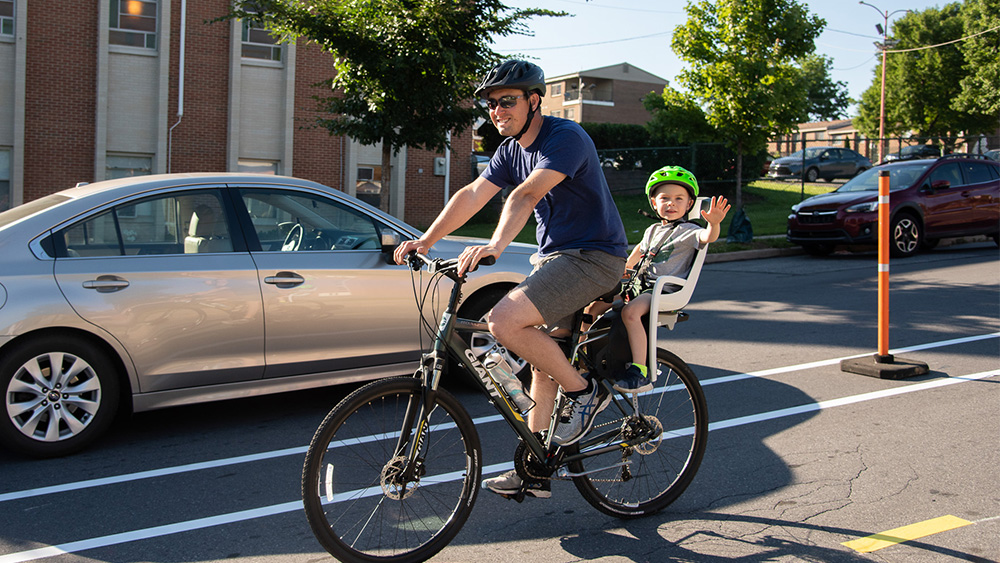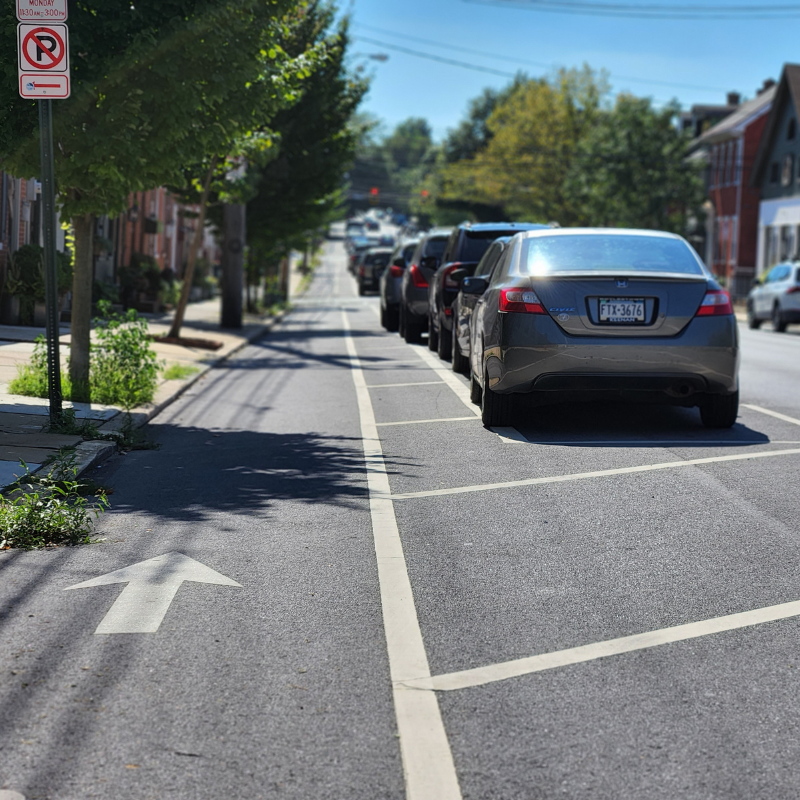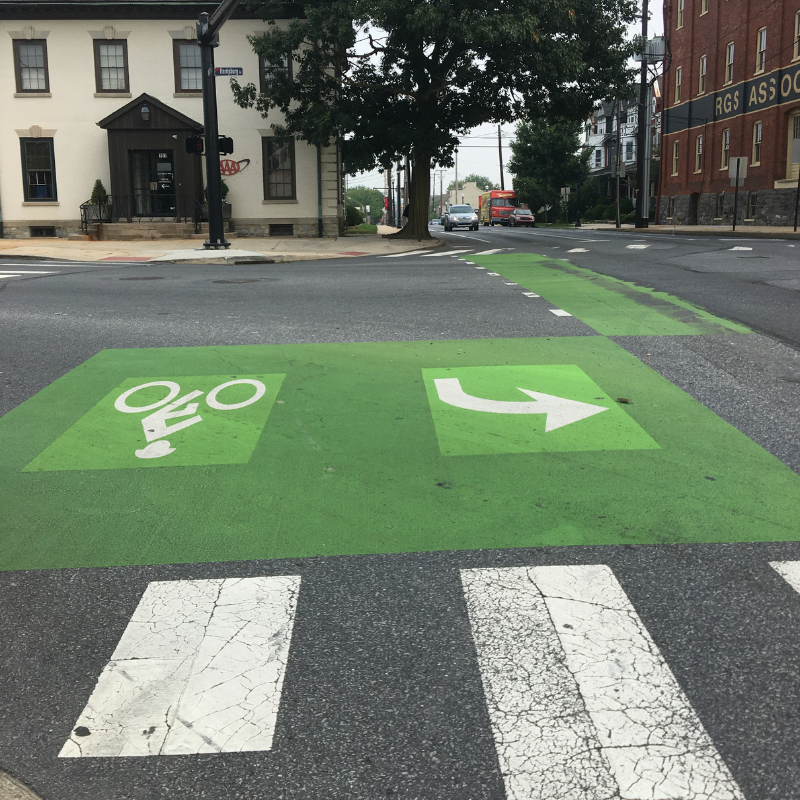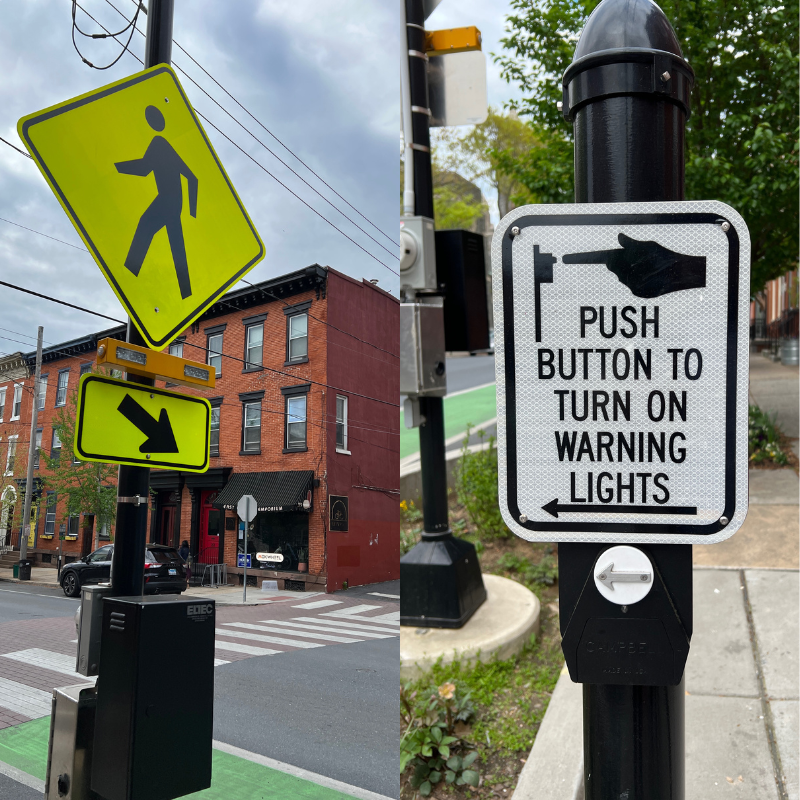Bicycle infrastructure not only encourages active transportation (biking, walking, or rolling) but slows down vehicle traffic by narrowing travel lanes. Slower streets are safer streets!
What bike infrastructure can be found in Lancaster City?
Lancaster City streets have a number of bicycle infrastructure amenities including conventional and separated bike lanes, bike boulevards, sharrows, bike boxes, and rectangular flashing beacons. Learn more about these different types of infrastructure below!






